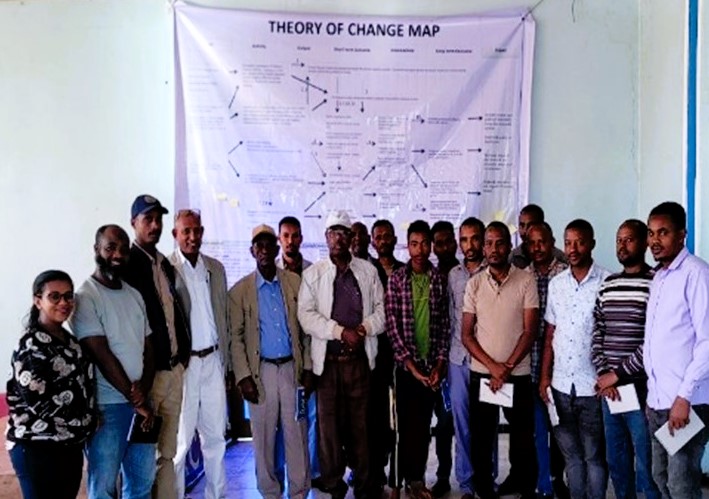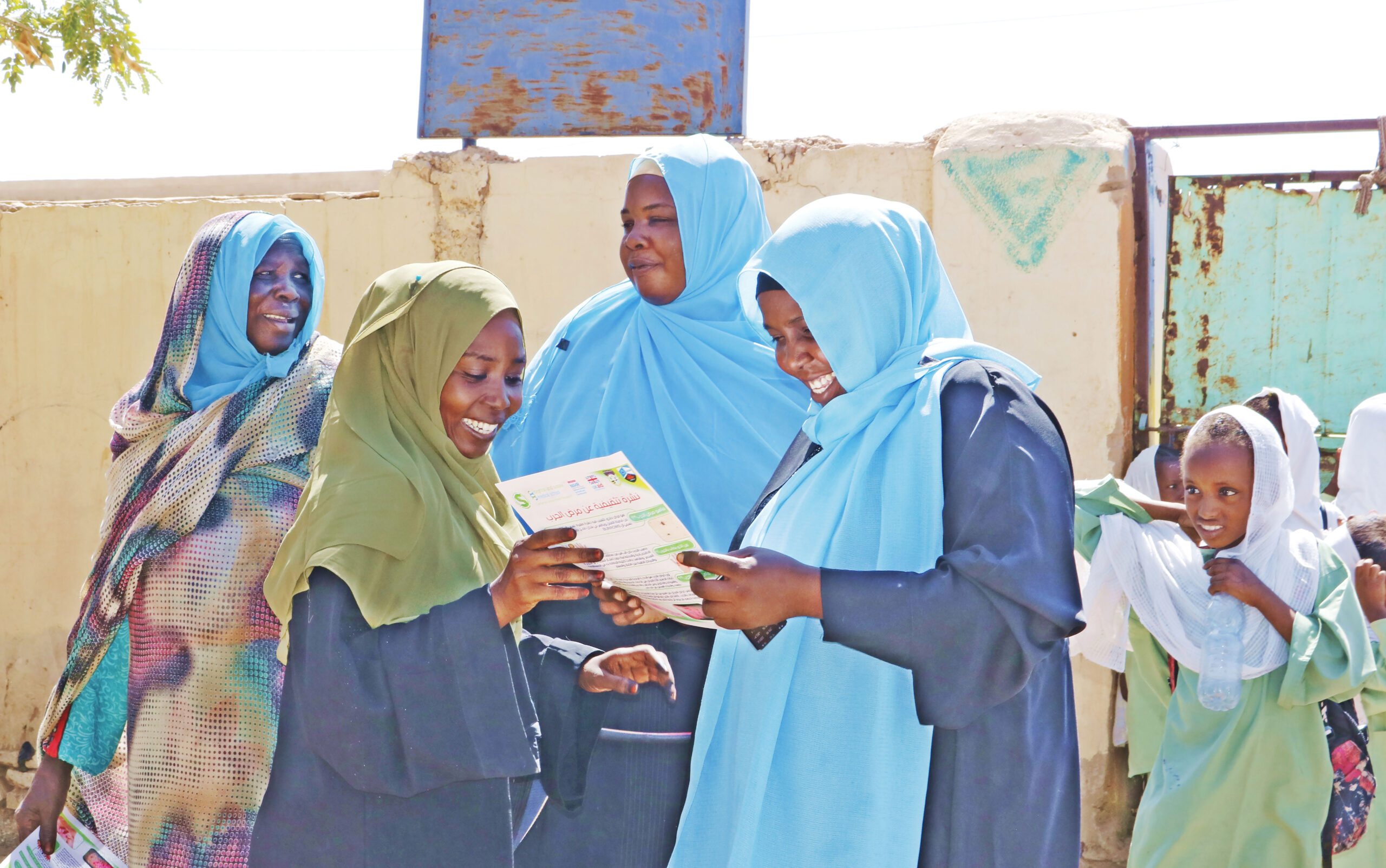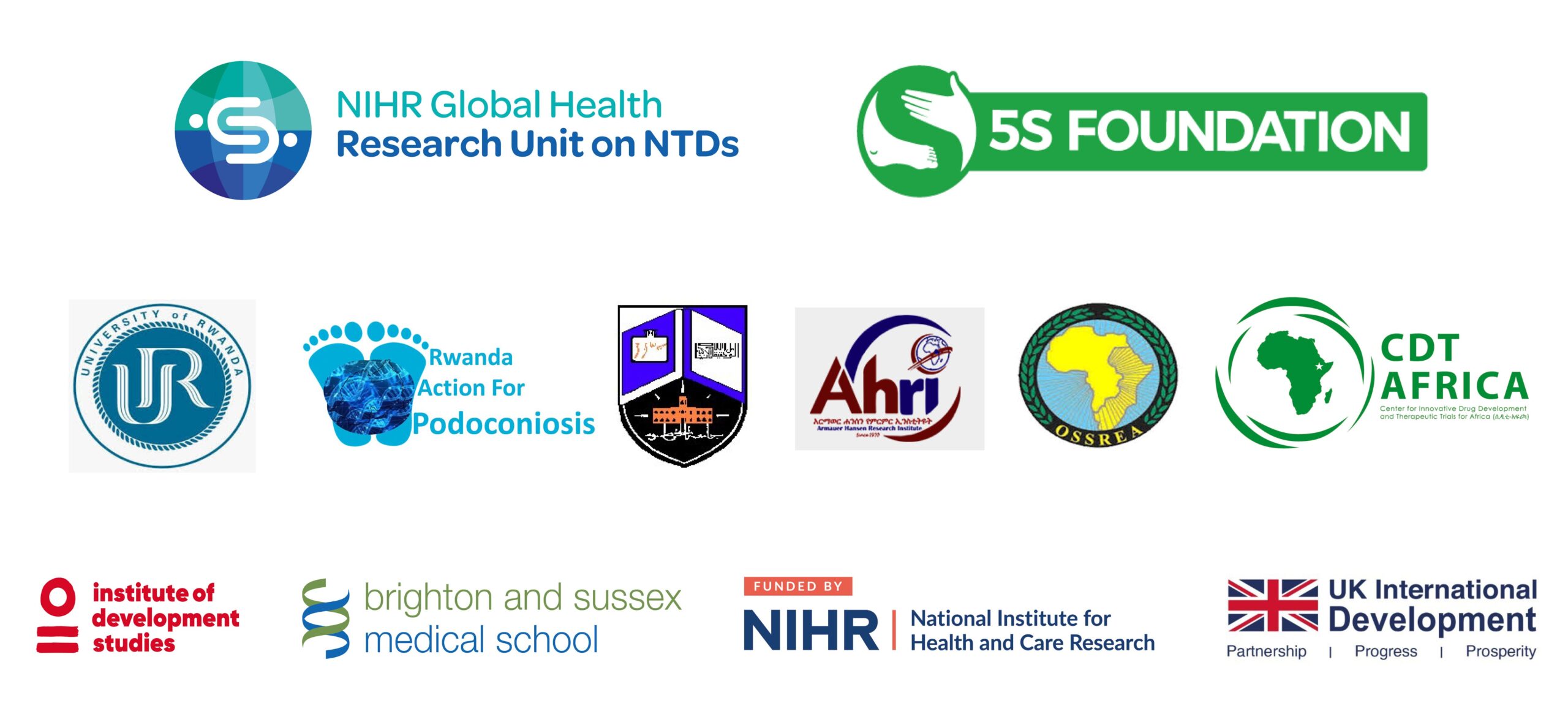
The NIHR Global Health Research Unit on NTDs is a large research collaboration partnership which was initially a 5-year research programme funded in 2017 to undertake world-class interdisciplinary research to provide an evidence base for interventions targeting the NTD epidemic with approaches that ‘leave no one behind’. The GHRU was successful in securing a subsequent round of funding in 2021 to build on this work for a further 5 years. The total funding awarded from NIHR for both units is £12.5 million.
Project Mission
The NIHR Global Health Research Unit (GHRU) on Neglected Tropical Diseases (NTDs) is a highly successful needs-driven research programme focused on three conditions considered severely neglected in terms of research, public attention and political will: podoconiosis, mycetoma and scabies in three endemic countries; Rwanda, Sudan and Ethiopia. The GHRU has conducted research comprising of geospatial analysis, medical anthropology, genetic mapping, drug identification and implementation science.

Where we work
- Brighton and Sussex Medical School (BSMS), UK
- Institute of Development Studies (IDS), UK
- Institute of Endemic Diseases, Mycetoma Research Centre, Faculty of Geography and Environmental Sciences, University of Khartoum, Sudan
- Mycetoma Research Centre, University of Khartoum, Sudan
- University of Rwanda, Rwanda
- CDT Africa, Addis Ababa University, Ethiopia
- Armauer Hansen Research Institute (AHRI), Ethiopia
- OSSREA, Ethiopia

- To investigate pathogen genetic diversity and/or host susceptibility to each condition;
- To improve understanding of the disease burden and distribution of each condition through a combination of field-based mapping and geo-spatial modelling;
- To identify new diagnostics and treatments for scabies;
- To evaluate services to improve prevention, diagnosis and care of these conditions, in particular integrating these with other skin-NTDs;

- To develop a network of researchers studying podoconiosis, mycetoma and scabies across three DAC countries;
- To increase societal awareness and expand the evidence base for national and international policy relating to these three NTDs;

- To support endemic-country PhD and postdoctoral training posts so that capacity for research into NTDs is expanded;
- To strengthen the research environment in which our collaborators and trainees work.
In addition to our scientific aims, the GHRU work is designed with a focus on Community Engagement and Involvement. Our CEI strategy identifies important global, regional and national routes through which our research may be defined, it is also embedded into our research itself to ensure the communities most affected by these diseases are engaged and input into the research process to co-create to improve the experience of affected individuals, increase societal awareness, reduce stigmatisation, and expand our evidence base for national and international policy.
In Phase 2 of our GHRU, we are delivering an entirely new five-year programme comprising 12 research projects. The research questions have been co-created through a process of i) consulting with stakeholders including patients, communities, implementers and policy makers; ii) identifying the areas in which our Phase 1 GHRU has had the most impact; and iii) participating in WHO and disease-group identification of research gaps. The projects will run in parallel and are grouped into four interrelated themes:
- Mechanisms of Disease
- Geospatial Mapping
- Drugs and Diagnostics
- Implementation Research


